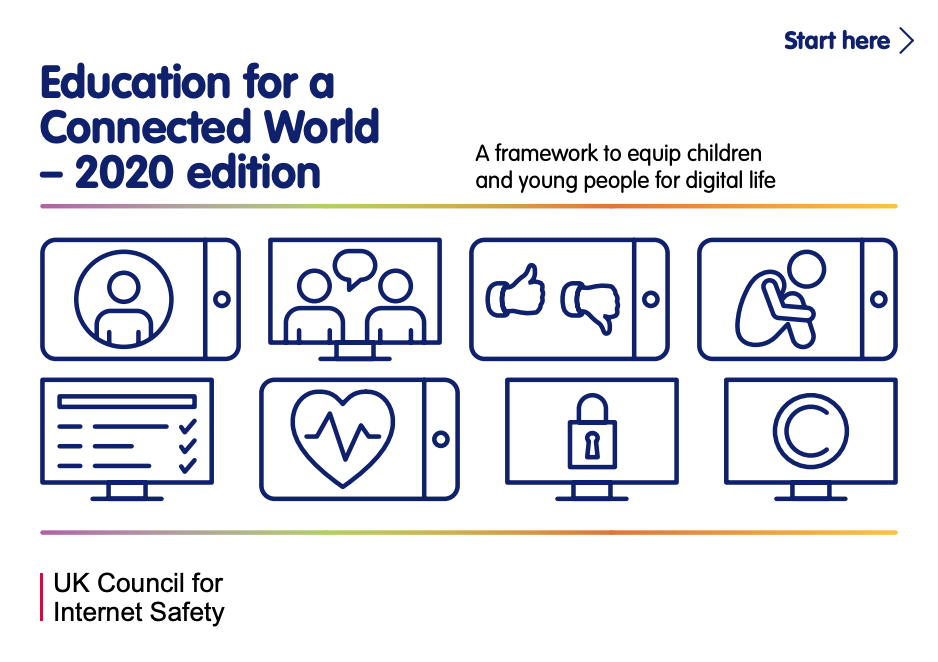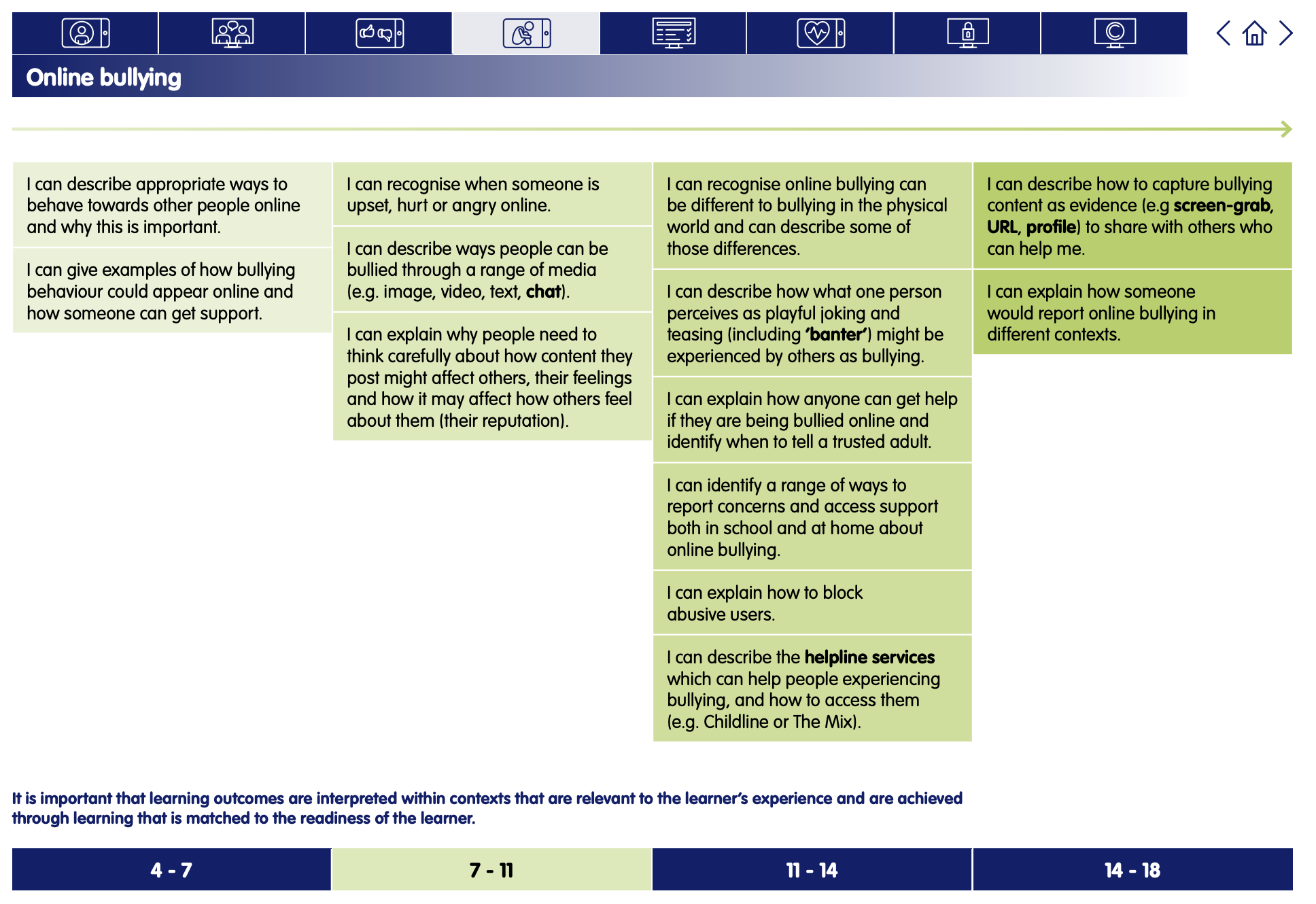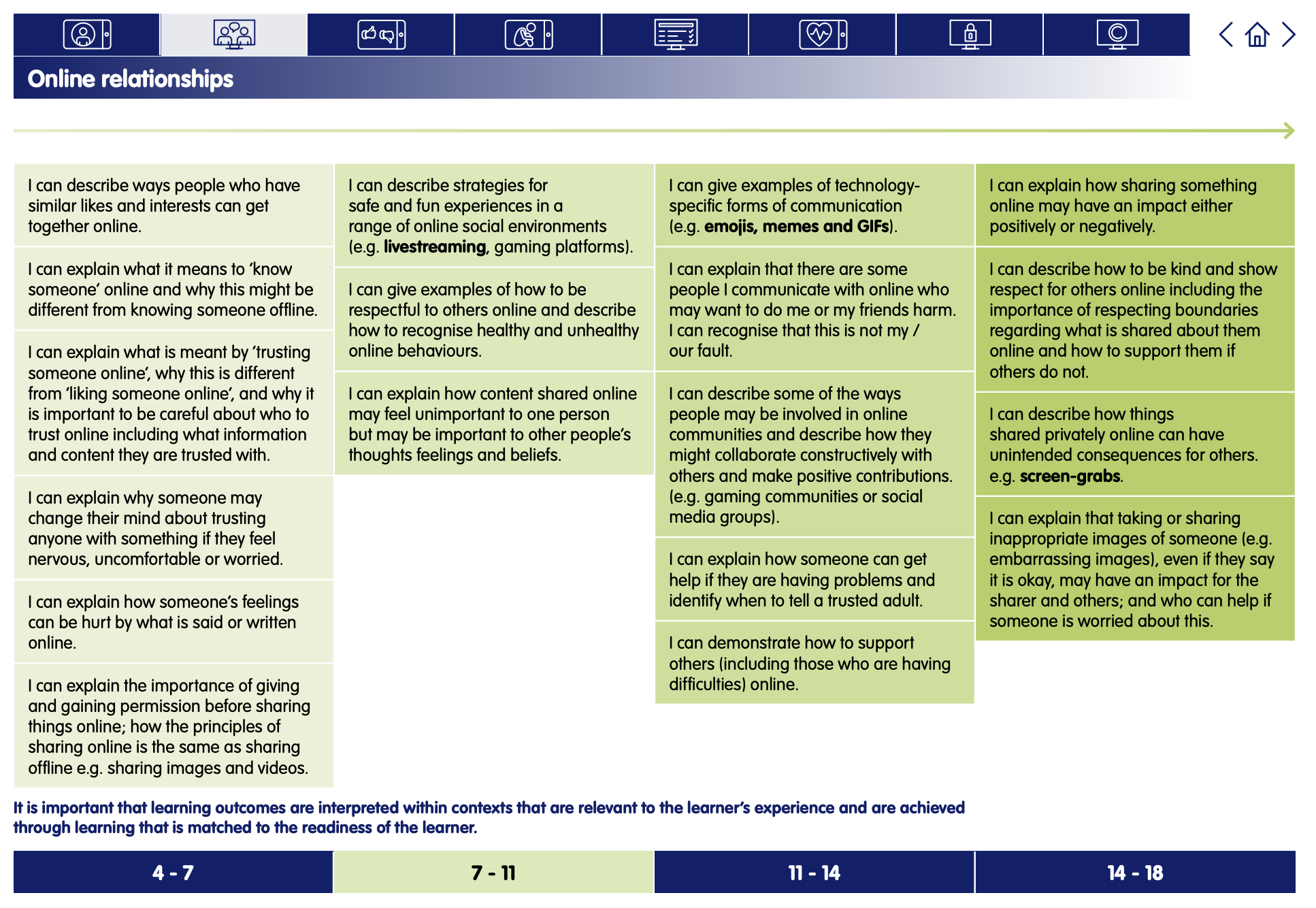The Power of Words
Digital Literacy and Online Safety (Y4) - Lesson 5
A note about this lesson

This lesson is taken from Common Sense Education’s excellent Digital Citizenship curriculum. Their resources are shared for free under A Creative Commons Attribution- NonCommercial- NoDerivatives 4.0 International License.
You can find the original resources HERE.
Objectives
- Understand that it's important to think about the words we use, because everyone interprets things differently.
- Identify ways to respond to mean words online, using S-T-O-P.
- Decide what kinds of statements are OK to say online and which are not.
Lesson Resources
Lesson 1 - Your Rings of Responsibility
Lesson 2 - Password Power-Up
Lesson 3 - This Is Me
Lesson 4 - Our Digital Citizenship Pledge
Lesson 5 - The Power of Words
Lesson 6 - Is Seeing Believing?
Links to Education for a Connected World.
This lesson from Common Sense Media's Digital Citizenship curriculum links to the following strands from the Online bullying and Online relationships sections of the Education for a Connected World framework.
Introduction - Same Word. Different Meaning
As kids grow, they'll naturally start to communicate more online. But some of what they see could make them feel hurt, sad, angry, or even fearful. Help your students build empathy for others and learn strategies to use when confronted with cyberbullying.
Before the lesson: As an optional activity before the lesson, have students play the E-volve game in Digital Passport™ by Common Sense Education. This will help introduce key concepts of this lesson. To see more, check out the Digital Passport Educator Guide.
Project Slide 4 and ask students: Imagine when you walked in, I said to you [in a friendly tone, with a big smile] "Hello!" Which emoji would fit?
Have students show their answer by holding up fingers (1, 2, 3, or 4). If anyone holds up a number other than 1, ask them to share why.
Repeat this two more times, saying Hello differently each time: once with an angry tone and a scowl, and once with a nervous or scared tone.
Project Slide 5 and ask: What about if you're just reading it? How does it make you feel now?
Point out how when something is just in text, it can be even more difficult to interpret what someone means. Explain that their responses might be different depending on who they are because we all interpret the world a little differently. Clarify that interpret means to understand something based on our point of view. (Slide 6)
Say: Because words can be interpreted differently by different people, it's important to think about the words we use and how they affect people. We might say something just to be funny, but someone might take it seriously, and it might hurt their feelings. This can happen in person, and it can also happen online. It may even happen more online, because the words are just text -- we're not actually face-to-face with other people.
Watch - The Power of Words
Ask: Who has heard of the saying "Sticks and stones may break my bones, but words can never hurt me"?
Invite students to respond. Answers will vary. Follow up by asking students if they think the saying is true.
Project Slide 7 and say: We're going to watch a video now called "The Power of Words." As we watch, continue to think about whether that statement is true or not.
Show the video The Power of Words and then call on students to share what it says about whether the statement is true or not. Emphasise that sometimes it is hard to ignore what someone is saying when it's a mean name. Names CAN make you feel sad or hurt.
Ask: Why do you think those other players said those things to Guts? (Slide 8)
Invite students to respond. Answers will vary, but possible reasons include they were trying to joke around or they feel badly themselves and are taking it out on someone.
Ask: What does Guts do in response to the mean words?
Invite students to respond and clarify that Guts talked to someone he trusted, who was able to empathise with him and give him some good advice. Define empathy as imagining the feelings that someone else is experiencing. (Slide 9)
Project Slide 10 and review the acronym S-T-O-P for responding to mean words online.
Investigate - What’s the Problem?
Distribute the Words Can Hurt Student Handout and read the directions aloud. Allow pairs five minutes to complete the activity.
Invite pairs to share their answers. Refer to the Teacher Version for possible responses.
Plenary - Crossing the Line
Place a string across the length of the classroom. Mark one half of the room "OK." Mark the other half "Not OK." Have students all stand on the OK side of the line.
Project Slide 11 and read the directions aloud.
Have students read the statements on Slides 12-15. After each statement, allow time for students to move or stay. Call on students to explain their thinking. If possible, choose students from each side to debate reasons why the statement is or isn’t okay.
For the examples where students say it’s Not OK, follow-up by asking them what they could do if they received that message from someone.
Review that kids like to go online to chat, watch videos, send messages, play games, and do homework. Sometimes people say mean or scary things. Messages that make people feel bad cross the line.
Have students complete the Lesson Quiz. Send home the Family Activity and Family Tips.
Extension Activity:
Prepare slips of paper with comments that say mildly unkind things, like:
- I can't believe you like superhero shows. Only first-graders do.
- You are weird.
- Why are you wearing THAT shirt?
Pass out one slip to each student and pair them up. Have students trade slips and read them silently. Then have them trade back and take turns saying the comment aloud to the other person. Ask them what the difference was between writing something not-so-nice and being accountable for what they were saying to someone's face. Emphasise that people sometimes hide behind the anonymity of their online activity. Remind students that if they wouldn't say something to another person's face, it's not OK to say it in their online activities.



